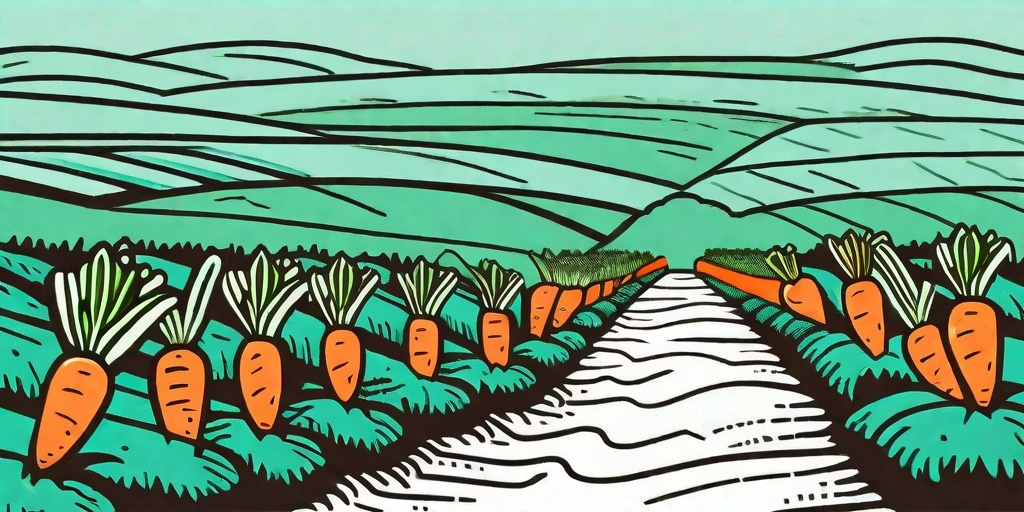
Welcome, dear reader, to the world of carrot harvesting. Whether you're a seasoned gardener or a newbie with a green thumb, this guide will help you navigate the orange sea of carrot harvesting. So, roll up your sleeves, grab your gardening gloves, and let's dive into the crunchy, delicious world of carrots.
Understanding the Carrot Life Cycle
Before we start pulling up carrots willy-nilly, it's important to understand the life cycle of this vibrant veggie. Like any good story, the life of a carrot is filled with drama, suspense, and a triumphant conclusion (usually in a salad or stew).
Carrots are biennial plants, which means they have a two-year life cycle. The first year is all about growth and development, while the second year is about flowering and seed production. However, we're interested in the first year, when the carrot is in its prime, juicy and crunchy.
The Sowing Stage
Carrots are typically sown in the spring, once the soil has warmed up. They prefer loose, well-drained soil. If you're planting in heavy clay or rocky soil, you might end up with stunted or deformed carrots. And nobody wants a carrot that looks like it's been through a yoga class.
When sowing, it's important to space the seeds properly. Too close, and your carrots will be fighting for space. Too far, and you'll have a lonely carrot field. Aim for about 2-3 inches apart.
The Growing Stage
After sowing, it's a waiting game. Carrots take about 70-80 days to mature, depending on the variety. During this time, it's important to keep the soil moist and weed-free. Carrots are not fans of competition, so keep those pesky weeds at bay.
As the carrots grow, their green tops will become more visible. Resist the temptation to pull them up early. Patience, grasshopper. Your reward will be sweet, crunchy carrots.
Harvesting Your Carrots
Now, the moment you've been waiting for: the harvest. This is where your patience and hard work pay off. But how do you know when your carrots are ready to be harvested? And how do you harvest them without damaging the carrot or the plant?
Let's answer these burning questions.
When to Harvest
The best way to know if your carrots are ready to be harvested is to check their size. A mature carrot is typically about 1/2 to 3/4 inch in diameter at the soil surface. However, size can vary depending on the variety, so it's always a good idea to check the seed packet for specific harvesting guidelines.
If you're unsure, you can always pull up one carrot to check. If it's a good size and color, it's time to harvest. If it's small or pale, give it more time.
How to Harvest
Harvesting carrots is a delicate process. You don't want to damage the carrot or the plant, so it's important to be gentle. Start by loosening the soil around the carrot with a garden fork or your fingers. Then, grab the carrot by the greens and gently wiggle it while pulling up.
If the carrot is stubborn, don't force it. Instead, water the area to soften the soil and try again later. Remember, carrots are like cats - they don't like to be rushed.
Storing and Using Your Carrots
Once you've harvested your carrots, it's time to store and use them. But how do you keep your carrots fresh and crunchy? And what are some delicious ways to use your homegrown carrots?
Storing Your Carrots
Carrots can be stored in the refrigerator for up to a month. Just remove the greens, wash the carrots, and store them in a plastic bag in the crisper drawer. If you have a root cellar, you can store them there for several months.
For long-term storage, you can also freeze or can your carrots. Just blanch them first to preserve their color and flavor.
Using Your Carrots
Now, the fun part: eating your carrots. From salads and soups to cakes and juices, the possibilities are endless. Try roasting them with some honey and thyme for a sweet and savory side dish. Or, make a carrot and ginger soup for a warming winter meal.
And don't forget about carrot cake. After all, you've worked hard for these carrots. You deserve a treat.
FAQs
- Why are my carrots small and stunted?
- Carrots can become stunted if the soil is too heavy or rocky. They prefer loose, well-drained soil. Also, make sure you're not planting your carrots too close together.
- Can I eat the carrot greens?
- Yes, carrot greens are edible and nutritious. They can be a bit bitter, so try mixing them with other greens in a salad or sautéing them with garlic and olive oil.
- What's the best way to water carrots?
- Carrots prefer consistent moisture, so it's best to water them deeply and regularly. However, avoid overwatering, as this can lead to root rot.
And there you have it, folks. Carrot harvesting 101. Now, go forth and harvest. May your carrots be crunchy, your harvest bountiful, and your carrot cake delicious.











